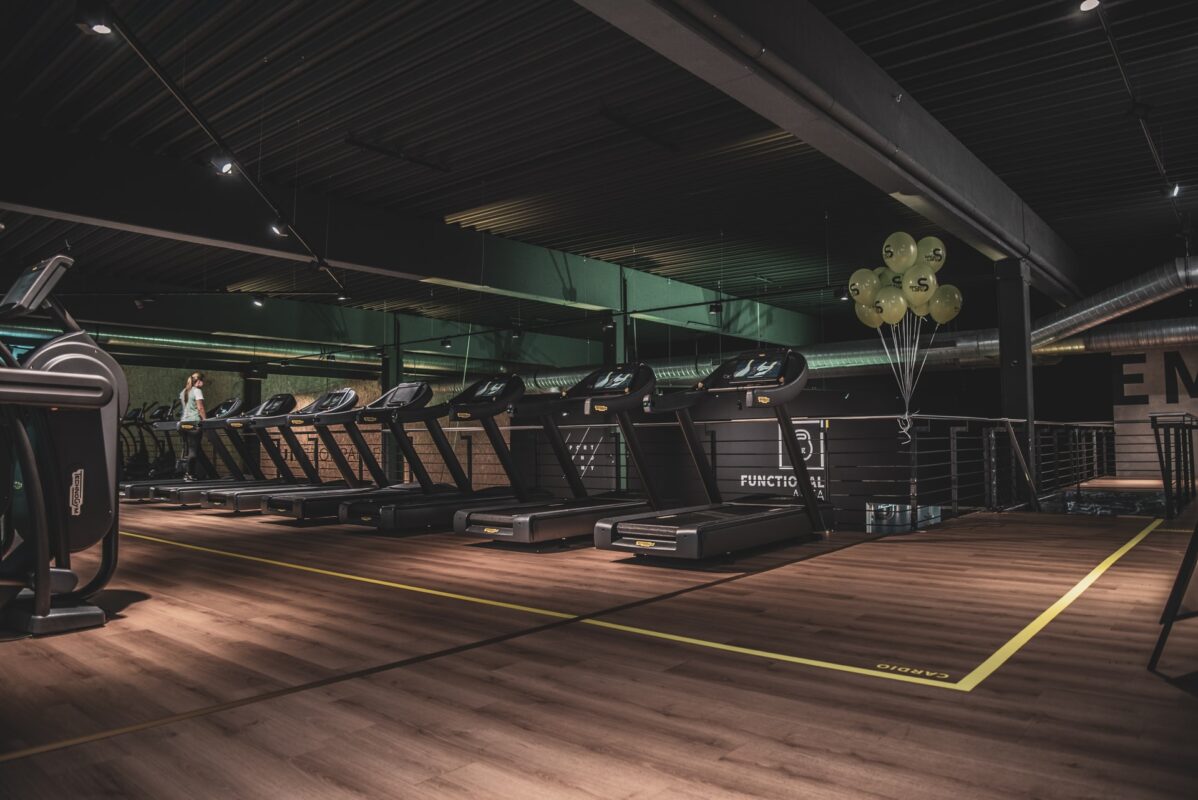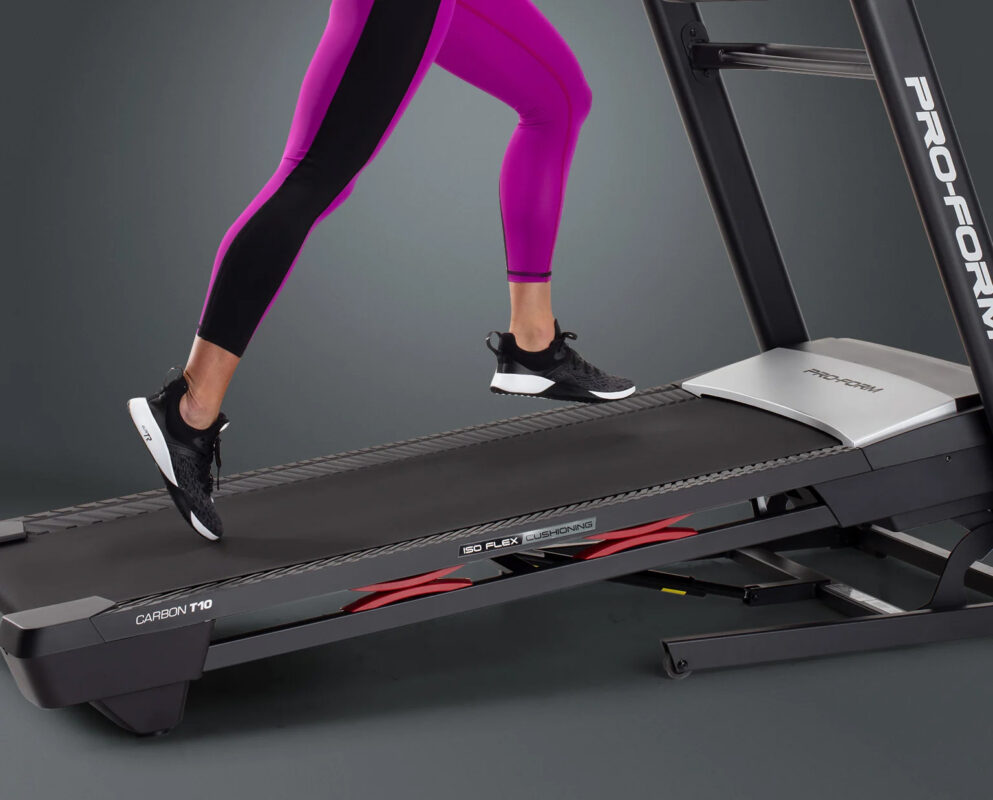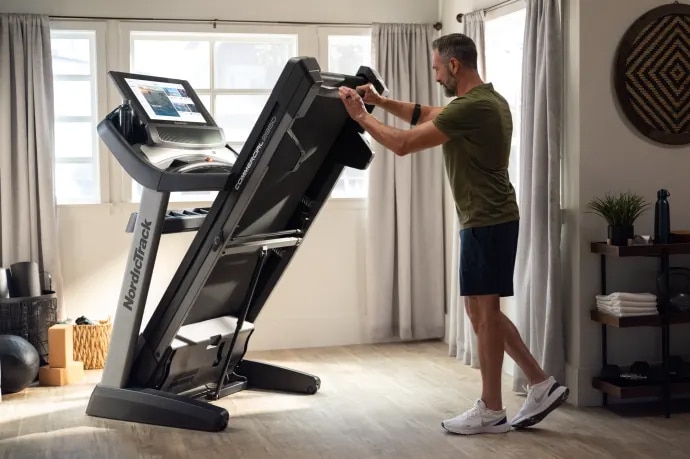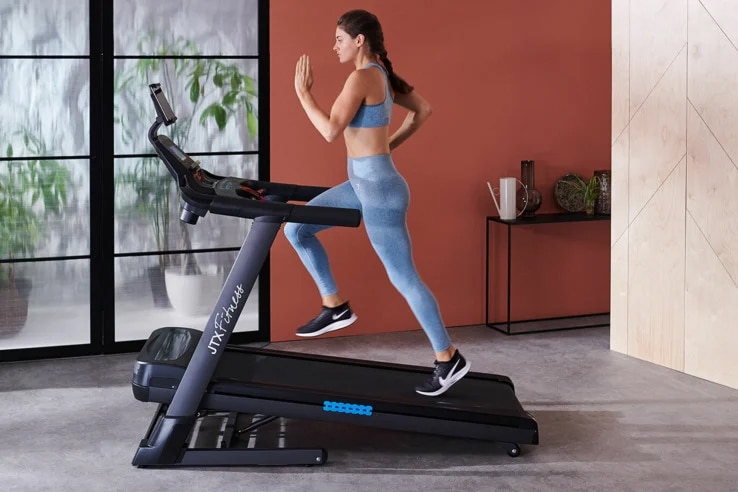
Contents
Treadmills have become an integral part of our exercise routine; they are the most popular aerobic exercise equipment and are readily available at most gyms. Unlike other machines, you don’t require expert guidance before beginning your treadmill workout; hence, most trainers prefer buying a treadmill for their home gym.
Today, the exercise equipment market is worth more than $7 billion and is expected to be more than $11 billion by 2023. The latest innovation in treadmills has brought several advanced features, including Bluetooth connectivity, various apps, and accurate health monitors.
However, the medical treadmills weren’t always as we see them today. The first treadmill concept was visualized about 1800 years ago in the Roman civilization; since then, there have been numerous changes in its design, structure, and purpose.
Today, we have its most sophisticated form that helps us curb obesity and build muscles. In this blog, we will take you through the history of the treadmills and how they got their modern shape and design.
Ancient Civilizations
Unlike today, the treadmill’s first design wasn’t made to suffice its role as fitness equipment; instead, it was designed to act as a pulley or lever to lift heavy objects. It was initially called a treadwheel or polyspaston (hoisting tackles with pulley); it was a large wheel that had strings attached to it; once the force was applied to the wheel, the strings would pull the object attached to them; hence, heavy objects can be moved from one place to another.
With time, engineers developed precise methods to attach a crane to the wheel. Once labor ran on the wheel, the crane would lift the object attached to it. The technique was 60% more efficient than other methods and required lesser human power. The idea was pretty popular in Roman civilization during 1 AD. It required 60 times less effort than purely-man-powered construction methods.
Power generation
After several hundred years, scientists soon found another use for a tread-mill; they designed a treadmill belt, which could convert kinetic energy into electrical energy. It means that electricity can be produced by running on the treadmill.
Initially, the first electric-producing treadmills were designed for horses; the energy was used for powerboats on the south coast of the USA; the horse treadmill turned out to be a success, and soon, other designs were created.
The markets of the USA soon had several treadmills that were designed for animals, including goats, dogs, and sheep. The smaller treadmills were used to power grindstones and fanning mills. Although the idea was a breakthrough for initial generations, it didn’t gather much attention after discovering other renewable energy sources.
Prison treadmill

The prison treadmill was another move toward the final shape of the treadmill; Although the shape of the treadmill still resembles a tread-wheel more than a treadmill, the purpose had changed from pulling objects to increasing human efforts.
In the 18th century, Sir William Cubitt noticed that prisoners in the Brixton prison weren’t suffering enough to hate their jail time; their sentences didn’t involve any hectic effort, which meant that a detrimental effect wasn’t created in the society. He decided to come up with the idea of a treadwheel that would be used to punish prisoners.
The treadmill was designed to accommodate more than a dozen prisoners at a time; the wheel was connected to an axle, and support was provided through clang-holds. Prisoners were asked to walk on the treadwheel for more than six hours daily; the high incline, alongside a staircase structure, meant that turning the wheel required high effort.
However, there were some problems; firstly, the treadmill test wasn’t just for individual walkers. As more than a dozen prisoners boarded the wheel at a time, a single walker could turn the wheel while others would let their feet move freely.
Secondly, the treadwheel didn’t require an exceptional external effort, and prisoners started to enjoy their time on it. A report stated that once, some prisoners walked on the treadmill for more than 10 hours, covering a vertical distance of more than 17000 feet- It is equivalent to climbing the empire state building 13 times.
Sir William Cubitt came up with a modern design to overcome previous problems; his new design connected the treadwheel to a water pump, and prisoners’ effort could be utilized to pump water or grind corn. The prison treadmill didn’t create results as expected, and soon, it was removed from the prisons in 1902.
Modern Design Patented
Until 1911, the modern treadmill design hadn’t come to life, mainly because engineers didn’t look at treadmills as a way to exercise. However, since the industrial revolution in the late 1800s, the world had started to experience rising obesity, and the elite classes of the time required a method to stay fit.
Claude Lauren visualized the modern design in 1911; he came up with a futuristic design, but historians believed that he didn’t actually produce a prototype treadmill in accordance with his plan.
The patent however was granted in 1913, and it is widely followed today. The treadmill structure had finally moved from a wheel to a flat belt that could be inclined, based on the runner’s needs. The treadmill also accounted for applicability for various users; it had adjustable side straps that allowed trainers of different heights to use the machine.
Lauren’s patented design also provided the basis for the earliest folding treadmill; his design included a flexible structure that could be folded when not in use.
Another futuristic trait of the design was the raised belt; earlier treadmills created massive noise, and training on them wasn’t comfortable for either the trainer or the surroundings. Lauren’s plan included four outer posts, which raised the belt off the ground.
The raised belt ensured that no or little noise was created while the machine was in use. His treadmill sketch was practically followed for several decades with mere additions, such as a treadmill motor.
Motorized treadmill
In the early 1920s and 30s, trainers used treadmills with a manual belt, which meant that trainers had to exert force to make the belt move. The treadmill wasn’t a good fit for old-aged users and created joint pain and injuries. The belt wasn’t made of polythene rubber either as we use today; instead, it was made of wooden slats joined together, which added to the difficulty for trainers.
Although the problems were widely known, the first motorized treadmill wasn’t made primarily to suffice them. The main goal was to help Dr. Robert Bruce and other specialists in physiotherapy clinics. In 1952, the first motorized treadmill was launched; heart disease patients were asked to walk and run on the machine while their heart and lung performance was being monitored on an ECG. After each interval, the speed and incline were changed, so the effect on the change in strain could be analyzed.
Another alternative used for the process was the Master’s two-step test; the process involved readings after lying on the bed and after stepping on a block. The method couldn’t bring noticeable results, as some people found it difficult to step on the block. The easy accessibility of a medical treadmill meant that the process was easier to carry out.
The cardiac arrest test became widely popular as the Bruce protocol, and physiotherapists worldwide used it in their checkups. The medical treadmill gained popularity amongst health clubs, but it was still not produced commercially due to a lack of technology innovation.
Commercially-Produced Treadmill
In the 1960s, A mechanical engineer named William Staub produced the prototype for the first mass-production treadmill. He found the inspiration for the treadmill from a book on aerobic exercise by Dr. Kenneth Cooper; the book established a point-based system to improve cardiovascular health; it highlighted the efficacy of walking daily for at least 8 minutes.
However, William Staub didn’t have the required funds to process the mass production of the machine, so he decided to seek funding from his guide, Dr. Kenneth Cooper. The idea behind the treadmill appealed to the doctor, who decided to fund its expansion; his company, Aerobics inc., funded the operations, and the first commercially produced treadmill was introduced to a broad audience.
The sales started to pick up in 1960, and Aerobics Inc started selling about 2000 units per year. In the 1980s, the sales had risen rapidly, and the sale count per year was a whopping 35000.
Other popular manufacturers entered the industry, and development paced up during the period. Life Fitness, the most popular treadmill manufacturer, started its operations as a bike production company, but in 1991, it decided to expand its operations into treadmill production.
Life Fitness treadmills stood out amongst the competition due to their patented shock absorption system; by this time, treadmill runners had increased vividly worldwide, and the culture of self-care had spread.
Treadmills were readily available in gyms, rehabilitation centers, health clubs, and other relevant spaces. Within the next decade, cheaper home treadmills were also launched on a massive scale; however, they were often manual to keep costs low.
Modern Day State

Modern-day treadmills are similar to the patented design launched by Claude Lauren; however, there have been some innovations to make the treadmill more efficient and enjoyable. The earliest addition to increasing entertainment was an advanced computer console; most modern-day treadmills have a giant screen placed at the center of the deck.
The screen generally contains the information about your workout; the details would generally include speed, incline settings, calories burned, and other vital statistics.
Other commercial treadmills may contain an advanced version of the console, which provides added options to the users. A popular feature of the console is Bluetooth connectivity; you can connect your phone to the treadmill through Bluetooth, and your workout information can be tracked on your phone. You can also play your phone’s music through the treadmill’s built-in speakers.
Lately, some manufacturers have added various app integrations for the treadmill. For instance, the kino map is a valuable integration; it allows users to feel different terrains worldwide; the treadmill is connected to the application, and the region changes as your treadmill moves.
The recent development also includes the development of a curved treadmill; it is a manual treadmill that contains a low arch in the centre while the ends are lifted. The treadmill is designed to adjust to the trainer’s pace; the high-quality belt and suspension prevent injuries and ensure that each workout lasts longer without unnecessary fatigue.
The curved design allows trainers to maintain a good posture during their workout sessions; the treadmills currently sell for a high price, approximately £5000, and are generally used by athletes and sportspersons.
We can believe that treadmills have reached the peak of their innovation, but still, various companies are trying to come up with different ideas to stand out from other producers. Recently, a tech startup produced a treadmill with a large screen embedded in the centre. The screen contains a high-end processor, and its size replicates a MacBook.
The producer aims to make the treadmill a one-stop shop for all types of exercise. You can enter the cardio mode by walking or running on the treadmill, and then the treadmill’s bespoke function will guide you regarding the process of resistance training that can be carried on a mat.
Conclusion: Why were treadmills invented?
Having read this far, you would have realized that treadmills have a rich history, and their design has been carefully developed after years of changes and upgrades. Summarily, treadmills were first made as a solution to lift heavier objects and reduce human effort in construction; the treadmill’s design wasn’t similar to the modern design; instead, it was a treadwheel that rotated with strings or a crane at its end.
After several years, a treadmill was redesigned to fit different animals to produce electrical power. The treadmill had a dynamo that rotated once force was exerted; the process produced electricity that could power day-to-day tasks.
In the early 1800s, the purpose of a treadmill was redefined by Sir William Cubitt, who wanted to use it to make a prisoner’s sentence difficult; his design was amended with time to pump water and grind corn.
The design of today’s treadmill can most closely resemble Claude Lauren’s patents that were published in 1913. The prototype of the patent couldn’t be developed back then, but the basis of the modern-day treadmill was set during the period.
In the 1930s, physiotherapists started to use the treadmill for medical argument; it was used during the ECG process to measure a patient’s heart rate at different strain states; the treadmills used in the process were the first electric motor treadmills.
Then, finally, in the 1960s, after the efforts of Kenneth Cooper and William Staub, treadmills were introduced on a wide scale, and since then, there has been nothing stopping its growth.
Today, the treadmill is one of the most used cardio equipment worldwide; its efficiency in losing weight alongside easiness to use makes it a preferred exercise routine for most trainers. Experts have developed HIIT workouts that enhance calorie burn and help you reach targets quicker. Studies have shown that an hour of treadmill workouts can burn about 1000 calories, more than twice than that of an elliptical.
Exercise is an essential part of our health, and we must pay the required heed to it. It isn’t easy to constantly motivate yourself after slow results, but you shouldn’t give up. Consistency determines your growth in the long run, and it will help you achieve your dream physical shape.



FAQs
Can a treadmill help me lose weight?
Treadmills are easily the best equipment to rapidly burn more calories and lose weight. The development of HIIT routines means that you can burn up to 1000 calories by training for an hour. The centre console of a treadmill will provide you with sufficient information about your workout; hence, you can judge the efficacy of your workout and change them accordingly.
A treadmill is undoubtedly great at losing weight, but it can’t help you lose weight overnight. You will have to stick to a running schedule for about two weeks to see a notable difference in your physical appearance. A balanced diet can add to the treadmill results.
Should I buy a manual treadmill?
Manual treadmills generally retail for an average price of anywhere between £500-£5000, which is probably their biggest plus point. Easy affordability all the way up to top quality, premium specs make them ideal as a home treadmill; no electrical costs and no costly repairs are also attractive perks for buyers. However, if you have the required budget and want more interaction, I suggest you go for a higher-end motorized treadmill.
A manual treadmill requires the trainer to exert force at the belt; hence, it causes fatigue during the workout, and longer sessions are difficult to bear. Similarly, the treadmill has often led to joint and knee pain in aged trainers.